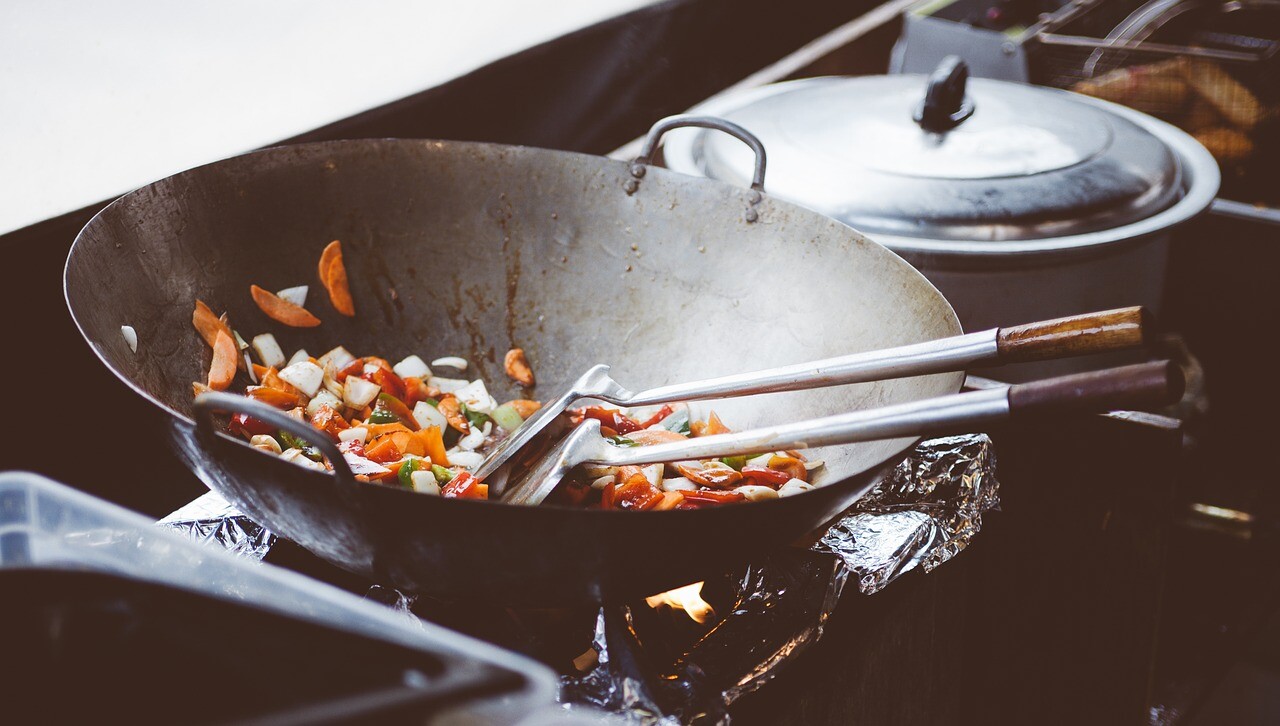Aluminum is a metal widely used for the production of items that come into contact with food. Pots, pans, utensils, trays and foil are made of aluminum. Aluminum objects that come into contact with food are often protected through painting or anodizing.
The transfer of aluminum to food
Aluminum alloys are resistant to corrosion. When exposed to air, they form a passivation layer of aluminum oxide. This layer protects the aluminum from further oxidation by creating a barrier to the external environment. The oxide layer is very thin and has chemical resistance to non-aggressive environments such as neutral solutions.
However, the passivation layer does not resist contact with acidic solutions with pH less than 4.5 or alkaline solutions with pH greater than 8.5. The aluminum is no longer protected and dissolves in these solutions.
A similar behavior occurs in the presence of chloride ions even at neutral pH. The chloride ions dissolve the oxide layer leaving the aluminum at risk from corrosion.
For aluminum not to be transferred to food, in most cases, it must be properly protected. If unprotected, aluminum must be used in a specific manner:
- aluminum cannot be put in contact with strongly acidic, alkaline or salty food;
- the contact time between food and aluminum must be limited, especially at non-refrigerated temperatures.
Specific Release Limit (SRL)
As for almost all substances, also for aluminum there is a maximum release limit for transfer to food in order to guarantee food safety. This limit is usually indicated with the acronym SRL (Specific Release Limit). For Europe, the P-SC-EMB (Committee of Experts on Packaging Materials for Food and Pharmaceutical Products) published in 2013 a guide to regulate the use of metals in contact with food that can be downloaded free of charge at the following link Publications on Food Contact Materials and articles . The guidance defines an SRL limit for aluminum of 5 mg/kg food.
Food contact articles must comply with this limit. The economic operator who places the article on the market shall verify that, under the intended conditions of use, it does not release too high amounts of aluminum to the food.
In order to increase the chemical resistance and thus reduce the release aluminum can be protected by painting or anodizing.
Anodized aluminum and food contact
Anodizing is a surface treatment that transforms aluminum by creating a protective layer. Through an electrochemical process, with the application of a direct current, a controlled anodic oxidation of the surface takes place. A compact oxide layer is formed on the aluminum surface.
Unlike the passivation layer that forms on aluminum naturally, the anodizing layer is much thicker, more compact and harder.
Anodized aluminum has good chemical resistance. It is very resistant to contact with salt solutions containing chlorides. Accelerated corrosion tests in salt spray show excellent resistance. For example, parts with hard anodizing treatment show resistance greater than 1000 hours without corrosion.
Anodized aluminum also has better resistance in acid or alkaline environments, but in these environments the resistance of the layer is limited. In fact, these environments are chemically aggressive for the oxide layer which is slowly dissolved. In the case of strongly acidic or alkaline foods, anodizing does not offer sufficient protection. Anodizing also has high hardness and wear resistance. This minimizes the amount of aluminum that can be transferred to the food by wear, abrasion or erosion.
EN 14392 Requirements for anodized products for use in contact with foodstuffs.
The European Standardization Committee CEN has published standard EN 14392 which defines the requirements for anodized aluminum products for use in contact with foodstuff. In order for anodized products to be suitable for food contact, certain requirements must be met.
- The chemical composition of the aluminum alloy of the parts to be anodized must comply with the requirements of EN 601 or EN 602. Since the anodizing treatment is a transformation of the aluminum alloy, any alloy element will also be present in the anodizing layer.
- A further requirement is that the sealing phase is mandatory. The anodizing layer has a porous columnar structure. In order to seal this porosity and thus increase resistance to corrosion, anodized aluminum can undergo a sealing treatment. The treatment consists of immersing the anodized part in hot water (usually at a temperature of more than 95°C [203 Fahrenheit]). Immersion in hot water hydrates the oxide layer, sealing the porosity of the layer and increasing its resistance to corrosion. Note that, compliance with the requirements of the standard is not sufficient to ensure compliance with the specific release limit. In fact, contact conditions can create a high transfer of aluminum even if protected by anodizing. The release of aluminum must certainly be verified in case of strongly acid or alkaline food and with high temperatures and contact times.
For the protection of objects intended for food contact it is recommended to carry out the treatment of hard anodizing OX-HS including the sealing phase. This treatment has high resistance to corrosion, wear and can be carried out at high thickness 50±10µm.
For more information, please refer to our statement Declaration for the use of aluminum anodizing treatments with food contact purposes




